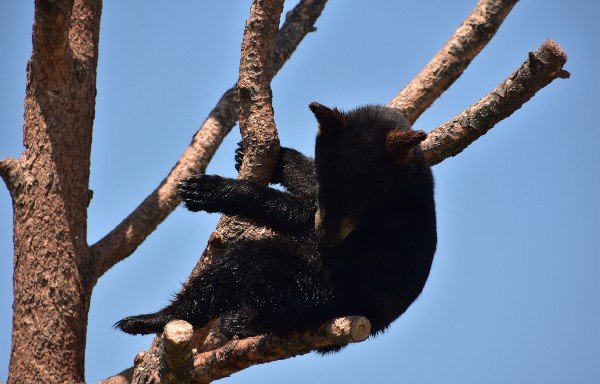In the Greater Yellowstone region, grizzly bears stand as a testament to the success of conservation efforts. Once teetering on the brink of endangerment, their population has rebounded significantly since 2016, owing much of this success to effective conservation strategies and the resilient efforts of female grizzlies. The steady birth rate, with 3 to 4 cubs annually since 1996, has played a pivotal role in revitalizing the population.
The Unique Reproductive System of Grizzlies
The reproductive journey of grizzly bears is a captivating blend of nature’s strategy and maternal instinct. After mating, a captivating phenomenon unfolds – ‘delayed implantation.’ During this phase, the embryo remains dormant until the female bear accumulates sufficient fat reserves. If this condition is not met, the embryo is reabsorbed, ensuring that bear cubs are born when the mother is in optimal health, maximizing their chances of survival.
During hibernation, assuming the female is adequately prepared, the embryo implants, and the development of bear cubs begins. Born in the safety of the den during winter, the cubs thrive on their mother’s rich milk. By spring, these little adventurers are ready for their first foray into the outside world.
However, life outside the den proves challenging, especially in the first year, with about half of the cubs facing natural hazards and threats from adult male bears.
Learning the Ropes
In the wild, female grizzly bears assume the roles of educators and protectors for their cubs, showcasing remarkable intelligence. Cubs learn survival skills through observation and imitation of their mother’s behavior. Key aspects include:
- Climbing Trees: Cubs are encouraged to climb trees, not just as a game but as a safety drill, developing essential muscles and coordination.
- Navigating Terrain: Mothers lead cubs through various terrains, pointing out landmarks and resources, fostering a strong sense of direction and familiarity.
- Protective Behaviors: Mothers demonstrate protective behaviors, teaching cubs to interpret these cues and vocalizations as signals of potential threats, vital for their survival.
Teaching Foraging, Fishing, and Hunting
As omnivores, grizzlies have a diverse diet, and mothers play a crucial role in teaching cubs how to find the most nutritious plants. Additional lessons include:
- Fishing Skills: Cubs learn to catch fish during salmon runs, observing and practicing under the watchful eye of their mothers.
- Foraging Techniques: Mothers show cubs how to uncover small mammals and rodents, teaching effective hunting strategies.
The Call of the Wild: Cubs’ Path to Independence
Female grizzlies breed every 3-4 years, and as the mating season approaches, they separate from their cubs. While this might seem harsh, it’s driven by an instinct to protect offspring. The mother, once fiercely protective, now strongly encourages her cubs to leave, understanding that male grizzlies attracted by her pose a significant threat to the cubs.
The moment of separation is poignant, where confused and distressed cubs express their upset through whining and whimpering. This heartrending scene underscores the harsh realities of nature, where survival takes precedence over family bonds.
Discover Wildlife with Yellowstone’s Bear World
If you’re fascinated by the lives of grizzly bears and desire an up-close encounter with bear cubs, Yellowstone Bear World provides a unique and unforgettable experience. Seize the opportunity to connect with nature in a truly special way. Visit us today to witness diverse wildlife. For more information, feel free to stop by, call us at (208) 359-9688, or connect with us online.





